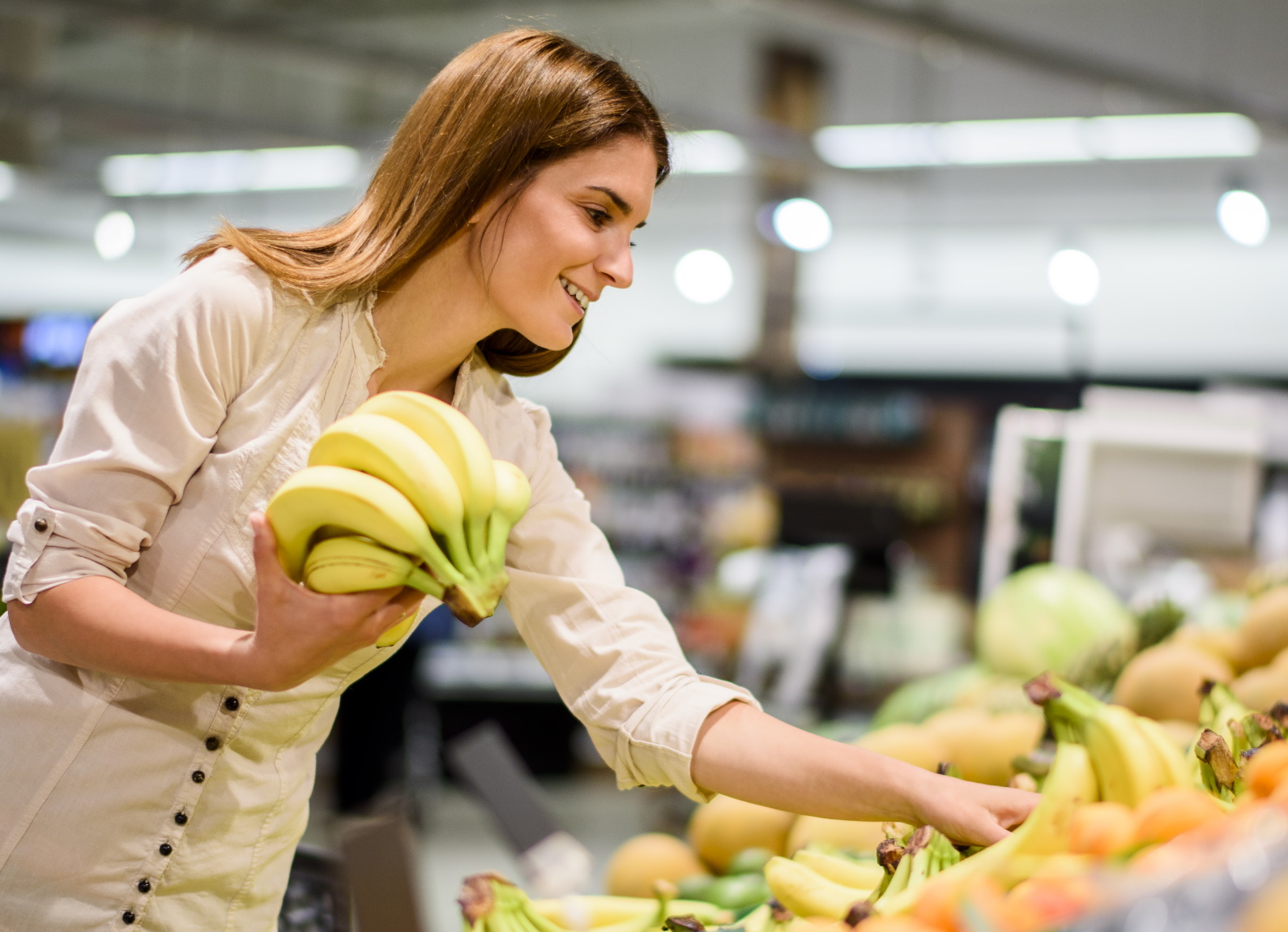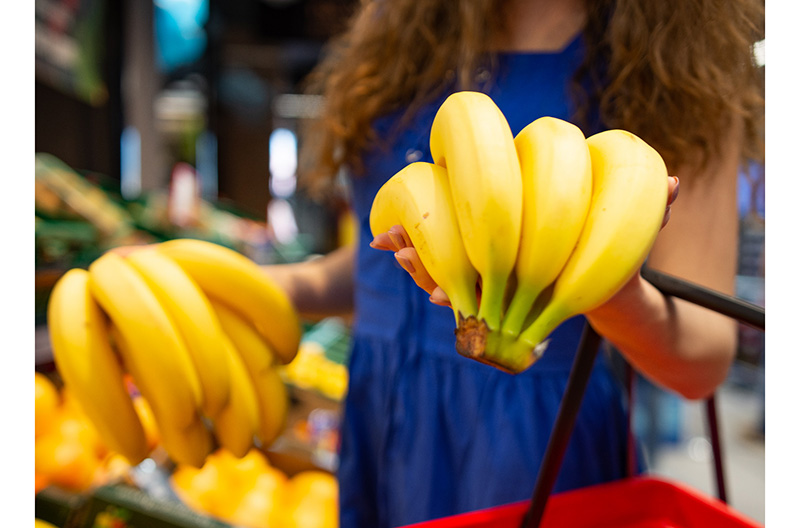Sponsored content

Few things are more important to a successful produce department than having beautiful, high quality fruit on display. That’s especially true when it comes to bananas. Studies have shown that having low quality bananas on display is one of the main reasons consumers change retailers. And since bananas are one of the most visible, best-selling and profitable items in the produce department, if not the entire store, this can have a major impact on your bottom line.

But as we all know, achieving this “Gold Standard” of ripe bananas in every store, every day can pose quite a challenge. To better understand the dynamics involved, we reached out to Gary Campisi, former senior director of quality control for produce, floral, meat and seafood at Walmart and Sam’s Club. Campisi was instrumental in the development and rollout of Walmart’s national ripening operation during their major supercenter expansion and is widely considered one of the industry’s foremost experts in commercial fruit ripening.
Today, Campisi consults for some of the largest grocery retailers in North America, works closely with UC Davis and is an independent engineering and training consultant for Thermal Technologies, the industry’s leading provider of commercial ripening rooms. We started by asking Campisi his views on the importance of banana quality in relation to produce department sales.
What is the relationship between banana quality and overall produce sales?
Campisi: First and foremost, bananas are one of the most important, popular and profitable items in the entire produce department, if not the entire store. And consumers have an expectation of ripe bananas at the retail level whether they’re shopping in-store or ordering online. We all share those expectations – even those of us in the industry. When bananas are of inferior quality, studies have shown it creates a negative impression of the entire department right from the start, which is proven to have a negative impact on overall produce sales.
Why is this important? Let’s take the case of Walmart. When I left the company in January 2018 after more than 25 years, we were processing more than 825,000 cases of bananas per week in 44 distribution centers and bananas were the number one dollar sales item at Walmart Supercenters. One percent of total sales and 9 percent of total produce department sales. So if we weren’t able to deliver the consistent, high quality bananas our customers expected, it would have had quite an impact on overall store performance. That’s why I’ve always seen banana quality as being one of the major cornerstones of controlling your own destiny as a retailer.
What would you consider to be the “Gold Standard” in retail banana quality?
Campisi: To me, the gold standard means always having bananas that meet your customer’s expectations, typically in the 3-4 and 5-6 color range. While that may sound like a 2-color program, it’s actually a single color program achieved through careful management of ripening cycles and delivery schedules.

When you can consistently deliver beautifully ripened bananas in the 3-4 range to each store in intervals that allow the previously delivered bananas to ripen accordingly, then you should always have bananas in color stages that meet your customer’s expectations.
However, it’s been my experience that to achieve this on a daily basis, you either have to have your own ripening rooms or extremely close relationships with wholesalers and growers nearby who can do the ripening for you to meet your pre-defined delivery schedules.
At Walmart, we used TarpLess ripening rooms from Thermal Technologies in all of our distribution centers. This gave us tight control over our own ripening program and enabled us to ship our bananas out at the exact color stage we needed to meet the requirements of every store. That’s how we were able to achieve such incredible success.
By maintaining the natural humidity levels of the fruit during ripening, we also found that the rooms delivered ¼ pound more weight per box over other systems we were testing while extending shelf-life up to12 hours for reduced shrink. Multiply that by 825,000 cases per week and you’ll understand why I consider that to be the gold standard for bananas. The profit margins were truly astounding.
What are the biggest challenges facing retailers when it comes to achieving the same results you enjoyed at Walmart?
Campisi: Well, even when you have your own ripening rooms you need to be attentive to the quality received to make sure bananas are conditioned in a way that maximizes quality while meeting your shipping schedules. All bananas are not created equal and the quality received can vary significantly depending on shipping conditions and country of origin right down to the specific farms used by the grower/packer.
One of the reasons I continue to work closely with Thermal Tech is to help their clients achieve the same success we enjoyed at Walmart. And key to that is helping them understand how to use the rooms effectively based on the quality of the product received day-in and day-out.
If you don’t have your own ripening rooms, then the challenge is to develop a supply chain that can deliver the same or similar results using fruit ripened by the wholesaler or grower. While this obviously poses a greater challenge from a control and consistency angle, I have seen some very successful results using this method.
The clear challenge here is achieving the same consistency at multiple retail locations using bananas from multiple sources. But it’s been my experience that if you start with the end in mind, namely the gold standard mentioned before, then establishing a process with buy-in from your vendors can usually achieve equally successful results.

What trends are you seeing in regards to retail produce overall?
Campisi: Overall I would say we are trending toward ever-increasing quality to meet consumer demand. As a retailer, you’re going to be hard-pressed to stay competitive without focusing on produce quality, especially with increased use of online ordering through phone apps.
Delivering quality produce ordered online is the looming challenge faced by retailers, made even more daunting by increased expectations of quality on the consumer side. Delivering the same produce quality whether purchased in-store or online in a seamlessly branded environment will soon become the new gold standard, and everyone’s working hard to make that happen.
But going back to our earlier conversation, success – whether in-store or online – begins and ends with the importance attributed to produce quality by management. Having high quality produce in-store, particularly bananas, is still the gold standard for success at retail and representative of each retailer’s individual commitment to quality and customer satisfaction. Ripening has come a long way over the last 30 years and as a result, so has banana quality, but challenges still lie ahead.
Now, consumers are looking for the same quality across all fruit categories from avocados to mangoes to pears, and we’re seeing ripening technology expand and rise to the occasion. The key is going to be who is able to harness this combination of technologies to meet the needs of tomorrow’s shopper. That’s the new gold standard and a topic for another day.
Our thanks go out to Gary for his input and insight. He can be reached at [email protected].
Thermal Technologies will be at booth No. 4039 at the IFPA Global Produce and Floral Show in Anaheim.
Read more about produce news from The Shelby Report.

